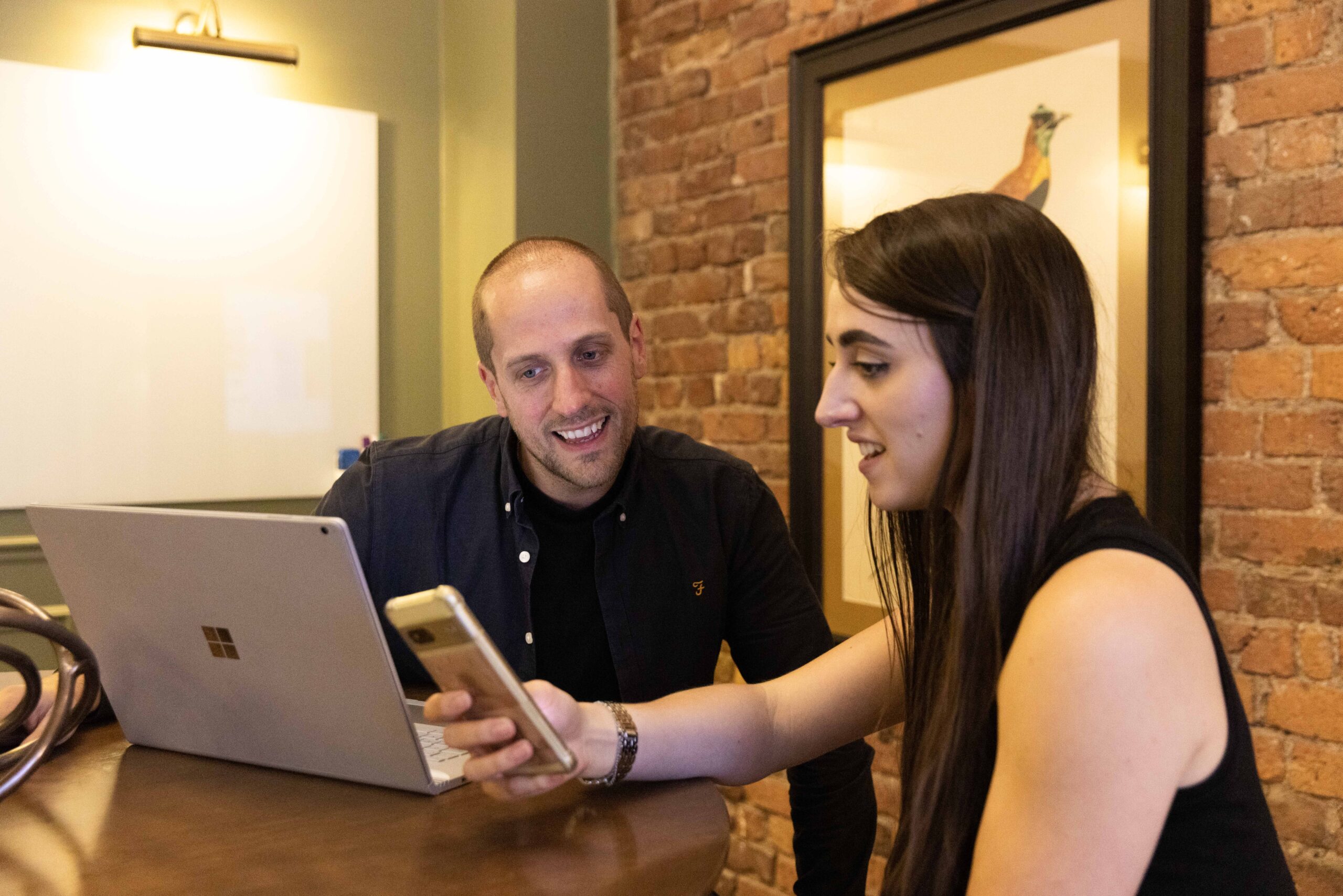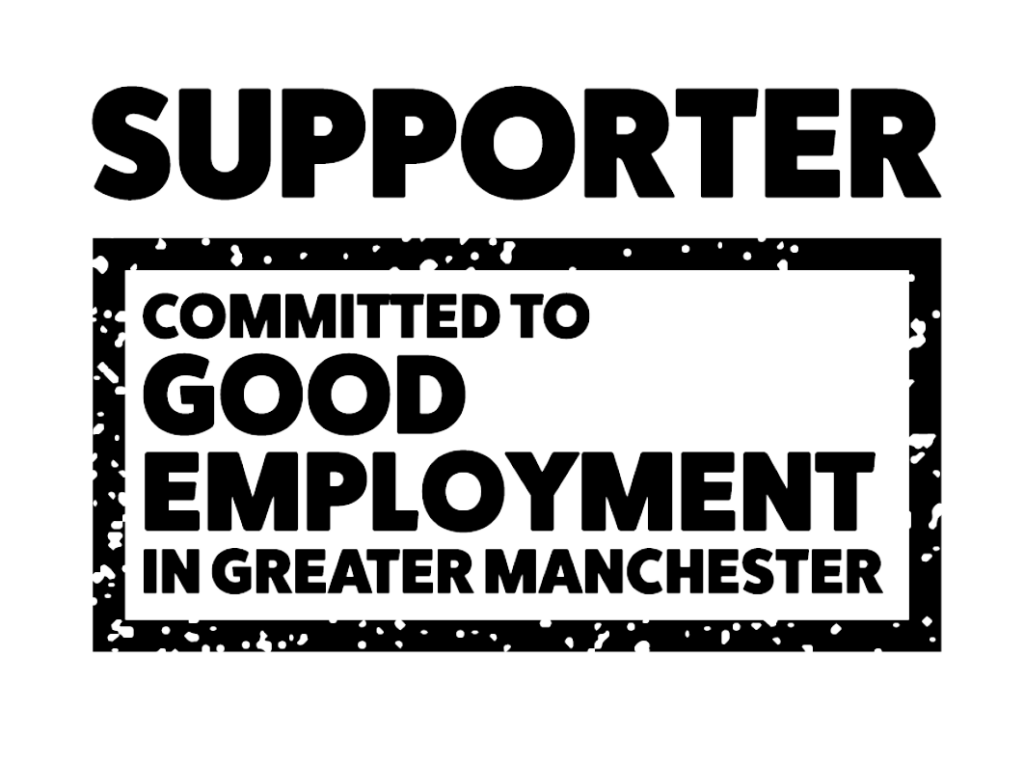What we do know is that AI can handle the soul-sucking tasks. Freeing us up for what makes us truly human – creativity and connection.
That’s why, at MP&CO, we’re paying attention.
We asked if AI might actually make our work more efficient. Our recent training uncovered some surprising (and very handy) ways to weave AI into marketing.
Now we’d like to share what we discovered.
We’ll share these new tricks:
“You can create your own GPTs,” says Ollie, our Content Executive. “You upload brand details and set some basic rules. Then the chatbot pulls from that info so you don’t have to repeat yourself every new conversation. It won’t replace your brand expertise but it speeds up the process and supports consistency.”
Mike, our Managing Director, has taken this a step further. He personalised his GPT with his skills, personality, habits and daily tasks. Now, it serves not just as a tool but as an in-house advisor. It challenges his thinking and pushes him to consider different perspectives, greatly aiding decision-making processes.
TL;DR: Custom GPTs act as both your in-house advisor and your efficiency expert. They learn your specific needs, helping you make better decisions and challenging your viewpoints, while also taking on the time-consuming tasks you’d rather avoid.

Georgina, our Head of Content explains how to tell your AI to “take a deep breath” or “think step by step.” These prompts encourage the AI to tap into more thorough examples of reasoning, giving you richer, more accurate answers.
You could also just ask your AI to ask you questions.
For example:
“I need a solid sales funnel from lead capture to final purchase. Please ask me any questions you need to create a thorough strategy.”
From there, the AI might ask about your target audience, average sale price, existing conversion rates or marketing budget.
Your responses will help it create a funnel that’s tailored to your unique goals.
TL;DR: Improve AI responses by prompting it to think carefully and ask you questions. This turns the AI into a curious consultant. It understands your specific needs before offering ideas to your prompts.
Emma, our Marketing Account Manager discovered a funny (but surprisingly effective) trick.
You can “guilt trip” ChatGPT into giving you more thorough answers. It’s backed by actual research. A recent study combined social cognitive theory with cognitive emotion regulation.
They found that adding emotion to prompts generates a 10.9% boost in performance, truthfulness and responsibility.
Emma suggests saying: “This needs to be well thought out and comprehensive, or I will lose my
house, partner and kids.” It sounds extreme, but the AI seems to take it more seriously.
TL;DR: Adding a bit of emotional pressure to your prompts can significantly improve AI’s performance. Saying something dramatic makes the AI respond as if the stakes are real.
“Unlike ChatGPT, which can’t always be relied on for factual information, Perplexity is a total game-changer,” says Mike, our Managing Director.
He uses it to grab current facts and source links, then switches to GPT-4 to shape those findings into outlines. “It saves loads of manual research time,” he adds. “We can still do our own interviews and dig through other data, but Perplexity handles the initial grunt work.”
So, why Perplexity?
Use it alongside your Google. You’ll cut down your research time and keep your information fresh.
TD;LR: Perplexity gives accurate facts and credible source links, saving tons of research time. It’s not a full search engine replacement but an “answer engine” that complements traditional methods like Google.

Dani, our Head of Client Services has been using Napkin to turn tough workflows into quick, understandable visuals.
“It really helped me sketch out complex stages – like a customer’s journey = so I could see them in different layouts,” she says.
Then she picked her favorite design and recreated it in Canva to match our brand. No more guesswork about which visual style might be best – it’s all right there.
Dani also leaned on AI for her persona research. She collected pages of notes on different customer types from strategy days, then asked AI to format the information.
“All my data was grouped by demographics, motivations and barriers to success,” she says. With the tedious part handled, she could focus on the actual insights instead of wrangling documents.
TD;LR: With tools like Napkin, you can transform complex workflows into clear visuals. Enabling you to quickly grasp and apply strategic insights without getting bogged down in details.
Security is our number one thing. We’re careful when handling personal data, especially if we’re using AI. We might have a shiny Cyber Essentials certificate, but that’s just one part of staying compliant and secure.
One thing we can all do when using AI is stripping out personal details or using placeholders. That way, there’s nothing sensitive if someone gets their hands on the data.
We’re also mindful of letting AI do all the heavy lifting. Sure, it speeds things up. But if you rely too heavily on AI, you risk losing your creative drive. It should serve as a sidekick, enhancing your research and supplementing your knowledge. Not replacing your creative efforts.
Does it excite you, or are you over the hype?
Do you want your team to dive in, or are you fine with how things are?
It’s a brave new world, and we’re all still finding our feet.
But we’d love to hear your take.
Let’s open that dialogue. Tell us what you think.


